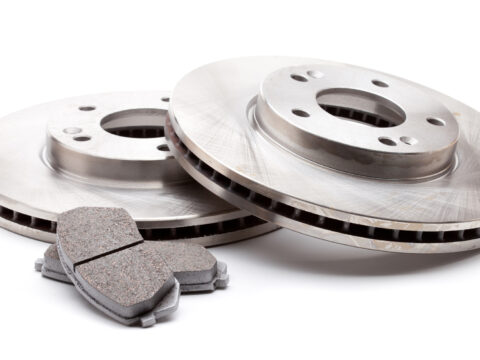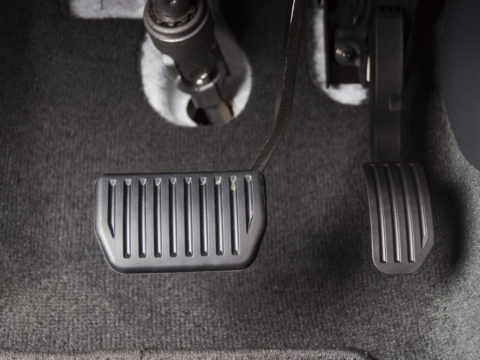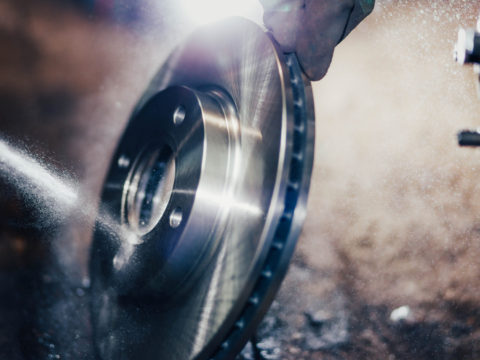Brake pads, like any other car component, wear out with time. Since brake pads offer safety on roads, you should always replace them at the right time. How often depends on your driving style and the material used in making them.
Several signs will tell you the brake pads need replacing. You only need to listen then act accordingly.
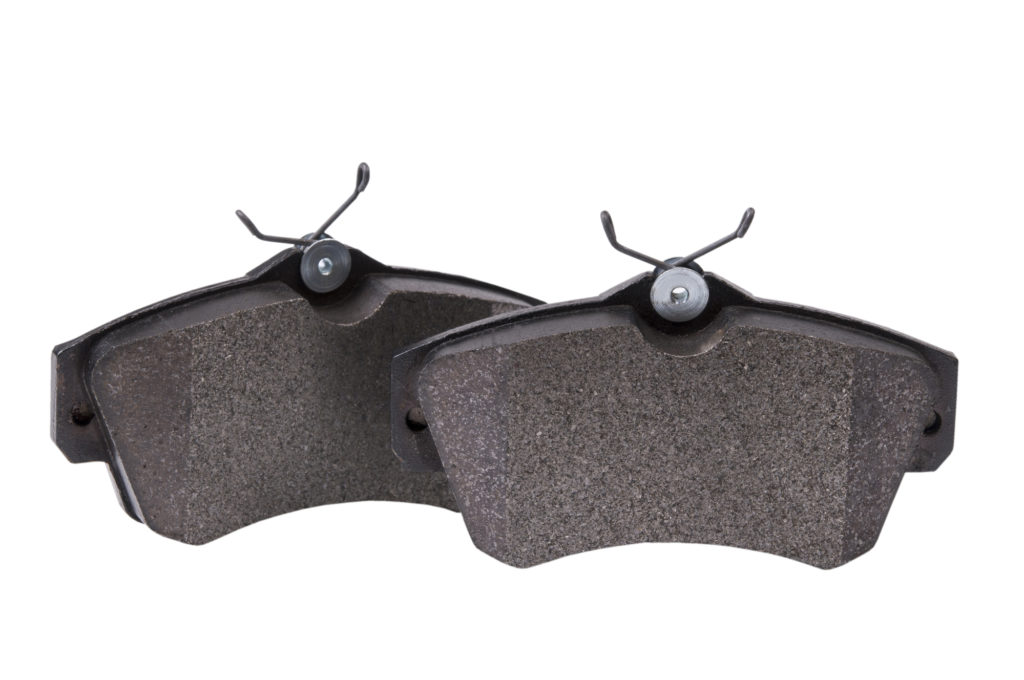
Contents
How Long Do Brake Pads Last?
Brake pads may last somewhere between 20,000 miles to about 70,000 miles for most cars. The exact duration depends on your driving style and the type of brake pads you have.
How to Check Brake Pads?
Checking your brake pads should be a regular part of your car’s maintenance routine. Thankfully, this is a DIY project that you can quickly do at home.
You can check your car’s brake pads in three ways.
- Wheels will give you the best signal that your brake pads are starting to wear out. When the brake pads are still in perfect shape, you’ll notice a buildup of brake dust on the wheels. This, however, decreases with time. Clean wheels are a clear indication that the brake pads need new replacements.
- You can also check the brake pad’s condition through the holes found on the wheels. The goal is to determine how thick the brake pad is. A thin-looking brake pad, less than ¼ inch, should be replaced. You may need a flashlight in this case. Here’s a quick YouTube guide on checking brake pads without removing the wheel.
- Consider removing your vehicle’s wheels if you cannot see the brake pad through the wheels. Start by elevating your vehicle to about 6 inches on a flat surface and unscrew all the nuts. The idea is to remove the tire. Once that’s done, you have a clear view of the brake pads. Check on its thickness to determine whether to replace it or not.
Some vehicles will give you a warning light on the dashboard if there are problems with the brake pad. Also, listen keenly to the loud noise every time you engage the brakes and the vibration on the steering wheel.
Common Signs of Worn-out Brake Pads
Brake pad issues don’t appear abruptly. There are tell-tale signs that indicate your brake pads are wearing out. These signs are an early warning of a grave danger possibly on its way. For this reason, you shouldn’t ignore them.
Here’s what you should watch out for:
a) Noise Coming from the Brakes
Sounds and noises emanating from your brakes are the number one sign of worn-out pads. Every time you step on your brake pedals, you’ll hear some squealing, rubbing, or grinding noises coming from the brakes.
It starts with the squealing sound, and by the time you hear grinding noises, your rotors are also damaged, increasing the overall repair cost.
b) Your Brake Pedal and/or Steering Wheel Vibrates
Vibrations in your automobile may signal issues with the brake pad. You’ll feel it when you put your foot on the brake pedal. Sometimes, your steering wheel may vibrate every time you engage your car braking system.
c) A Car Taking Too Long to Stop
You may notice that the car isn’t responding quickly to your braking command like it used to before. That’s because the brake pads are immensely worn out, so they don’t apply the necessary friction to the rotors to stop the car.
d) The Warning Lights
If you’re driving a modern car, you’ll likely see a brake warning light appear on the dashboard. It indicates there’s an issue with the car’s braking system that you should address immediately.
You might see the warning light on your dashboard if the brake sensors deem the brake pads too thin.
e) The Brake Pedal Seems Hard or Spongy
Have you noticed that lately, you must apply a lot of pressure to the brake pedal before you can engage your brakes? Or, the brake pad seems somehow spongy? That could be a sign of brake pad wear.
What Causes Brake Pads to Wear
It’s natural for brake pads to wear with time. A brake pad can last between 20,000 to 70,000 miles, but others tend to wear out quickly. Below are the four factors that cause brake pads to wear.
a) Driver’s Error
Your own doing is the most common cause of brake pads wearing out fast. In typical cases, a driver should use their right foot to engage the braking system while the left foot engages the accelerator. However, other drivers use their feet the other way round when driving.
Such drivers leave their left foot resting on the brake pedal, engaging the brakes. In this case, even without noticing it, the brake pad gets in contact with the rotor as the car moves, so they wear out quickly.
b) Rotor Wear
A worn-out rotor can make your brake pads wear out quickly. Perhaps it’s burnt, bad, or its two sides don’t show the same thickness. Remember, a rotor in perfect shape has smooth surfaces and has the same consistency on its sides.
c) An Issue With Slide Pins
Corrosion on slide pins will not allow the caliper to slide out smoothly, placing it off-center. What happens next is that part of the brake pads will get in contact with the rotor any time you’re driving, wearing them out quickly.
d) Low-quality Brake Pads Replacement
You may have bought them cheaply, thinking you’re saving some money. However, such cheap, low-quality brake pads tend to wear out fast, costing even more to repair and replace.
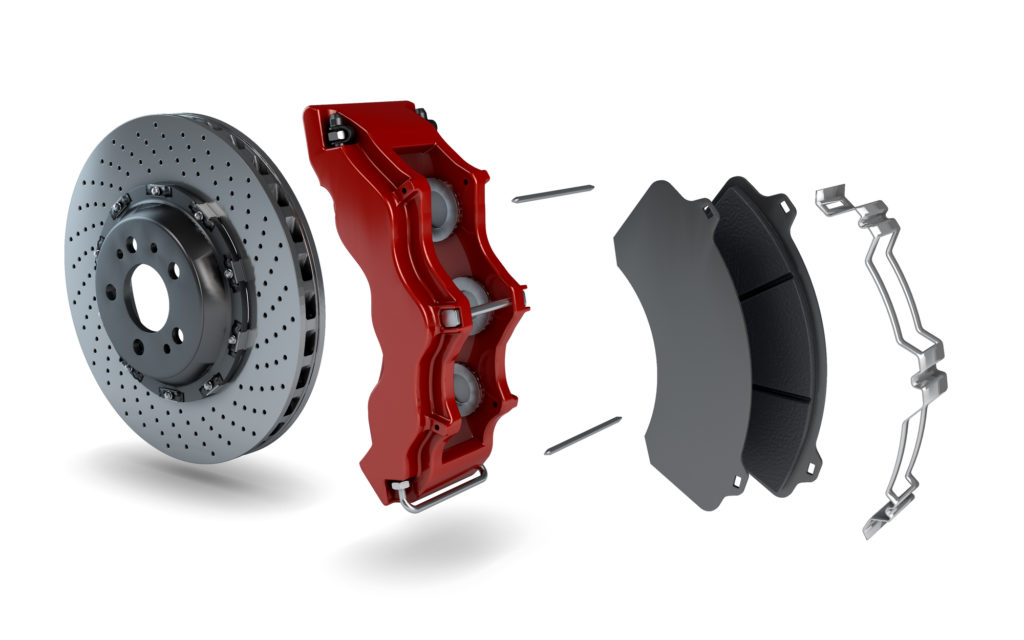
When Should You Replace the Brake Pads?
Ideally, you replace brake pads once they reach their service limit. But other factors and situations may force you to do it earlier.
a) Based on Brake Pad Thickness
How much material is left on your car’s brake pad to offer braking needs? That’s the brake pad thickness, and based on how thin it has become, you may be forced to replace the brake pads earlier. If the pads are less than ¼ inch thick, you should replace them immediately.
b) Based on Distance Covered
It all depends on your owner’s manual. However, to keep brake pad wear to a minimum, replace them every time you cover 20,000 miles.
c) Based on the Type of Brake Pads
Brake pads come in three main types, metallic, organic, and ceramic. The friction material on the organic brake pads has a very soft formulation, so these brake pads don’t last long. Due to its hardness, ceramic lasts the longest, whereas metallic lies in between the two.
Regardless of the brake pads you have, always watch for the signs above to know when to replace them.
d) Based on Manufacturer’s Recommendation
Though there are no rules regarding this, most auto manufacturers recommend that you replace your brake pads every 30,000 to 40,000 miles.
How Much Does It Cost to Replace Brake Pads?
On average, replacing a brake pad may cost between 150 to 300 dollars per axle, depending on the friction material. Brake pads made of organic materials are usually the cheapest.
Can You Change the Brake Pads Yourself?
Yes, but only if you have the experience and are entirely sure the brake pads are worn-out. Otherwise, seek the help of a professional instead of compromising your safety.

